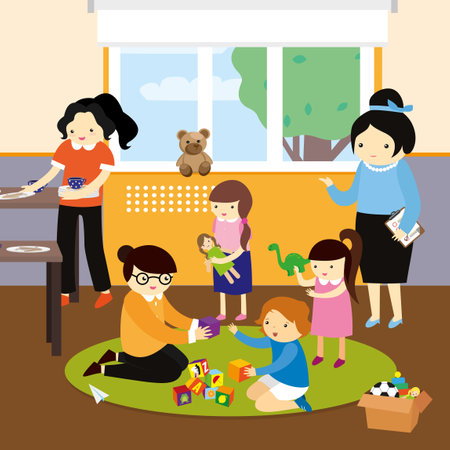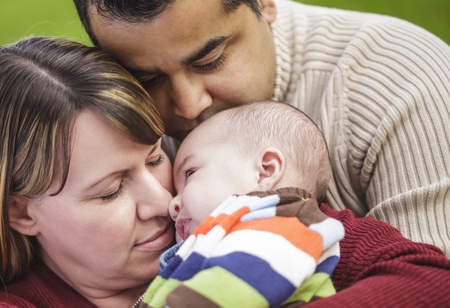Introduction to Birth Choices in the UK
The United Kingdom offers a diverse range of birth options, reflecting both the advancements in medical care and the evolving cultural attitudes towards childbirth. Expectant parents can typically choose between hospital births, home births, and midwife-led birthing centres, each supported by the National Health Service (NHS) with varying degrees of accessibility depending on geographic location. Hospital births remain the most prevalent, often selected for their immediate access to specialised medical care and emergency interventions. Home births, while less common, are increasingly recognised as a safe option for low-risk pregnancies and are favoured by those seeking a more personalised, familiar environment. Birthing centres provide a middle ground, emphasising a natural approach under the guidance of skilled midwives within a homely but medically equipped setting. The availability and uptake of these choices reflect not only clinical considerations but also deeply rooted cultural beliefs about safety, autonomy, and the ideal birth experience within the UK context.
2. Historical Perspectives and Shifts
The landscape of birth choices in the UK has undergone significant transformation over the past century, shaped by evolving cultural beliefs, medical advancements, and shifts in public policy. Traditionally, childbirth in Britain was a domestic affair, with most women giving birth at home attended by female relatives or local midwives. The early 20th century marked the beginning of a gradual transition towards hospital births, driven by growing trust in medical science and increasing concerns about maternal and infant mortality rates.
This shift was further reinforced during the establishment of the National Health Service (NHS) in 1948, which made hospital maternity care more accessible to all social classes. By the 1970s and 1980s, hospital deliveries had become the norm, reflecting broader societal values that equated clinical settings with safety and modernity. However, this period also saw emerging critiques regarding over-medicalisation and lack of personal agency for birthing women.
In recent decades, there has been a renewed interest in alternative birth settings such as home births and midwife-led birthing centres. This change is influenced by a growing recognition of womens autonomy, cultural diversity within the UK population, and research highlighting the benefits of personalised, less interventionist care for low-risk pregnancies. Government policies have increasingly supported these options to meet diverse needs and preferences.
Key Milestones in Birth Practice Evolution
| Era | Main Setting for Birth | Cultural/Policy Influence |
|---|---|---|
| Pre-1940s | Home | Tradition, community midwives |
| 1948–1970s | Hospital | NHS establishment, focus on safety |
| 1980s–1990s | Mainly hospital; early alternatives emerge | Medicalisation critique, womens movements |
| 2000s–present | Diverse: hospital, home, birthing centres | Policy support for choice, cultural diversity |
The interplay between culture, policy, and medicine continues to shape public attitudes towards birth choices. Today’s expectant parents are encouraged to make informed decisions suited to their unique values and circumstances—a distinct departure from previous eras where options were often limited or dictated by prevailing norms.

3. Influence of NHS Guidelines and Support
The National Health Service (NHS) plays a pivotal role in shaping public perceptions and accessibility regarding birth choices across the UK. As the primary healthcare provider, the NHS establishes clinical guidelines that inform both expectant parents and healthcare professionals about the safest and most appropriate options for childbirth, ranging from hospital deliveries to home births and birthing centres.
One significant aspect is how NHS policy emphasises evidence-based practice, prioritising the health and wellbeing of both mother and baby. These guidelines are developed by expert panels, often referencing research conducted within the UK context, which ensures that recommendations are tailored to local population needs and resources. This approach can reassure parents while also setting boundaries around what is considered safe or recommended within NHS care pathways.
Accessibility is another critical factor influenced by NHS provisions. The availability of certain birth options—such as midwife-led units or support for home births—varies between regions depending on funding, staffing, and local demand. In some areas, women may have broad access to different birthing environments; in others, logistical constraints may limit choice, inadvertently reinforcing a cultural preference for hospital births.
Public advice and antenatal education provided by NHS practitioners further shape attitudes toward birth choices. Through community midwives, GP surgeries, and online resources like the NHS website, parents receive up-to-date information about their options, risks, and rights. This trusted guidance can empower women to make informed decisions but may also influence preferences through the framing of advice or perceived endorsement of particular settings.
Ultimately, the NHS not only delivers clinical care but also acts as a key cultural agent in defining what constitutes a normal or acceptable birth experience in the UK. Its guidelines and support systems help set societal norms around childbirth safety, autonomy, and expectations—a dynamic that continues to evolve alongside emerging evidence and changing public attitudes.
4. Role of Family, Community, and Social Norms
Family traditions, community expectations, and broader social norms play a significant role in shaping birth choices across the UK. While clinical recommendations and personal preferences are important factors, the influence of close-knit relationships and societal context cannot be underestimated. In many British families, especially among older generations, there is a strong tradition of hospital births, often seen as the safest option due to historical developments in maternity care. However, recent shifts in social attitudes—driven by greater access to information and an emphasis on patient autonomy—have led some families to re-examine these traditions.
Community networks also contribute to individuals perceptions of acceptable birth options. In urban areas with diverse populations, community groups may support or discourage home births or midwife-led units based on collective experiences and cultural backgrounds. For example, South Asian communities in the UK sometimes favour extended family involvement during childbirth, which can affect preferences regarding birthing locations and support systems.
Social norms further impact decision-making through public discourse and media representation. There is a growing narrative around empowered birth choices, reflected in NHS campaigns promoting informed decision-making and respectful maternity care. At the same time, stigma can persist around certain choices—such as elective caesarean sections or water births—which may lead individuals to feel pressure to conform to perceived norms within their immediate social circles.
Influence Matrix: Family, Community, and Social Norms
| Factor | Positive Influence | Potential Challenges |
|---|---|---|
| Family Traditions | Offer emotional support; provide practical advice from experience | May reinforce outdated practices; limit openness to alternatives |
| Community Expectations | Create shared understanding; facilitate resource-sharing (e.g., doulas, midwives) | Risk of judgement if deviating from group norms; perpetuate misinformation |
| Social Norms | Promote evidence-based practices through public health messaging | Generate stigma around less conventional choices; create pressure to conform |
The interplay between these influences means that healthcare professionals must adopt a culturally sensitive approach when discussing birth plans with expectant parents. Encouraging open dialogue about family history, community values, and societal expectations can help ensure that birth choices align with both personal preferences and best medical practice.
5. Media and Public Discourse
The British media plays a significant role in influencing public attitudes towards birth choices, often reflecting and shaping societal norms. National newspapers, television programmes, and digital platforms frequently report on issues related to childbirth, including home births, midwife-led care, and the medicalisation of labour. Coverage tends to highlight both the benefits and risks associated with different options, though sensationalism or selective reporting can sometimes skew public perception.
Celebrity culture also contributes to the narrative around birth choices in the UK. When well-known personalities share their personal experiences—whether opting for natural home births or planned caesarean sections—their stories can inspire or sway the opinions of expectant parents. These accounts often attract widespread attention in mainstream and social media, fostering discussion about autonomy, safety, and individual preference.
Advocacy groups such as the National Childbirth Trust (NCT) and Birthrights are influential in promoting informed decision-making and championing women’s rights during childbirth. Through campaigns, educational resources, and lobbying efforts, these organisations challenge stereotypes and advocate for greater choice and respect within maternity services. Their voices contribute to ongoing debates about accessibility, equity, and evidence-based practice within the NHS framework.
Ultimately, the interplay between media coverage, celebrity influence, and advocacy efforts helps shape public discourse on birth choices in the UK. This environment not only informs prospective parents but also stimulates critical dialogue among healthcare professionals, policymakers, and the wider community about best practices and evolving cultural expectations surrounding childbirth.
6. Cultural Diversity and Birth Experiences
The United Kingdom is recognised for its rich multicultural landscape, which significantly shapes attitudes towards birth choices. With communities from South Asia, Africa, Eastern Europe, the Middle East, and beyond, the spectrum of beliefs and traditions surrounding childbirth is extensive. This cultural diversity introduces a range of perspectives on pregnancy care, preferred birth settings, pain management methods, and postnatal practices.
Multicultural Influences on Birth Preferences
Families from different backgrounds may prioritise certain traditions or rituals during pregnancy and birth, such as specific dietary practices, the presence of extended family members, or spiritual customs. These preferences can sometimes differ markedly from mainstream NHS recommendations or typical UK birth experiences. For example, some cultures place emphasis on home births attended by female relatives or traditional birth attendants, while others may seek hospital births for perceived safety and access to medical intervention.
Navigating Mainstream Attitudes
The integration of diverse cultural practices often presents both opportunities and challenges within the UK’s maternity services. Health professionals must navigate these complexities with sensitivity and respect, ensuring that all women feel empowered in their birth choices while maintaining safe clinical standards. There can be instances where cultural expectations clash with standard medical advice, prompting the need for open dialogue and mutual understanding between families and healthcare providers.
Enhancing Culturally Competent Care
Efforts to provide culturally competent maternity care are ongoing within the NHS. This includes offering translation services, recognising religious considerations (such as modesty or dietary restrictions), and supporting informed decision-making. By acknowledging and respecting these varied perspectives, the UK continues to evolve its approach to childbirth, fostering an environment where every family’s values and preferences can be meaningfully accommodated.
7. Current Trends and Future Outlook
In recent years, the landscape of birth choices in the UK has undergone significant evolution, reflecting broader cultural shifts and advancements in medical technology. Increasingly, expectant mothers are prioritising personalised care and informed decision-making, leading to a rise in preferences for midwife-led births, home births, and birthing centres, alongside traditional hospital deliveries. This diversification of choice is supported by the NHS’s commitment to offering women greater autonomy over their birthing experiences.
Emerging trends suggest that British society is gradually moving towards more flexible and inclusive models of maternity care. There is growing recognition of the importance of respecting individual values, cultural backgrounds, and psychosocial factors when supporting birth plans. Additionally, an increasing emphasis on mental health and emotional wellbeing during pregnancy and postpartum periods is shaping both policy and practice.
The impact of advancing medical technology cannot be understated. Innovations such as improved foetal monitoring, less invasive pain management options, and telemedicine consultations are enhancing both safety and accessibility for mothers across diverse settings. These developments also enable better identification of high-risk pregnancies, facilitating timely interventions while preserving women’s choices whenever possible.
Societal values are also playing a pivotal role in shaping future directions. There is a discernible shift towards shared decision-making between healthcare professionals and families, ensuring that birth choices align with personal beliefs and circumstances. Public discourse around equality, diversity, and inclusion is influencing the design of maternity services to be more culturally sensitive and accessible to all communities within the UK.
Looking ahead, it is anticipated that birth preferences will continue to diversify as further technological advances emerge and societal attitudes evolve. Continued investment in research, education, and service development will be essential to support this progression. The future outlook points towards a maternity care system that not only prioritises clinical safety but also empowers women with genuine choice and holistic support throughout their childbirth journey.

